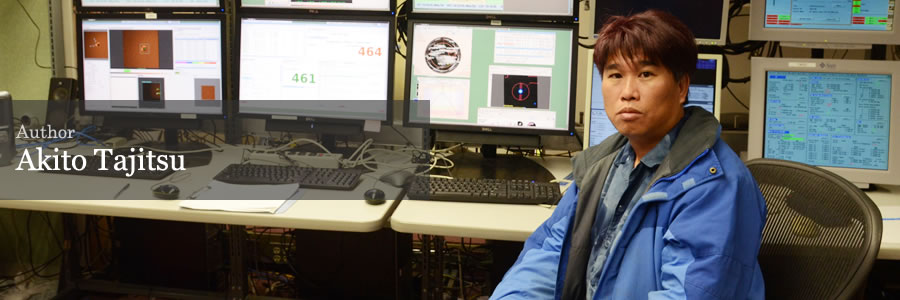What would you like to introduce to readers in this series?
Roughly speaking, the universe consists of stars and other materials (gas and dust between stars). A galaxy is an aggregate of these stars and gases, and a collection of galaxies is a galaxy cluster.
A planetary nebula, picked up in this topic, is a celestial object that tries to return back to gas and dust by releasing these materials that a star at the end of its life is composed of.
When these released gases get together, a new star is born. So, in this way, metempsychosis takes place in the universe.
However, the released gas is not totally the same as the gas that existed at the original star birth.
The gas has heavy atoms that come from the fusion reaction inside the star throughout its life.
Stars leave evidence of their existence in the next generation like this, continuing and stacking this process again and again. We call this chemical evolution.
Also, in the same way, a supernova explosion is a stage of chemical evolution.
A supernova is a phenomenon that more commonly takes place among younger and heavier stars than those that become planetary nebula. The amount of materials released and the effect on the environment would be much greater.
Because the exploded celestial object temporarily becomes very bright, many astronomers research this phenomenon even if it takes place in a distant galaxy.
On the other hand, the effect of planetary nebula chemical evolution should not be ignored.
It is believed that some elements are made in lighter mass stars that do not explode and become older gradually.
In addition, it is interesting that a small number of planetary nebulae develop from very old stars born in almost the same year as the galaxy's birth.
I want you to know we are trying to figure out the history of galaxies from the research of such celestial objects.
Bright planetary nebulae, such as Ring Nebula (M57), can be observed with a telescope of about 10 cm. With such an instrument, you would have many chances to observe the stars at star gazing parties and so on.
It is also thought that our sun has a high probability of ending its life as a planetary nebula in the distant future after several billion years.
It would be fun to look through a telescope thinking about the cycle on a larger time scale of the metempsychosis that is one hundred million times longer than our life.
My research field and current interests:
I have worked at the forefront of observation as a support scientist for the Subaru Telescope. I want to take part in next-generation telescope planning, such as planning for the TMT (Thirty Meter Telescope), taking advantage of my experiences. And then I would like to investigate the root of each galaxy in detail by researching planetary nebulae in the Andromeda Galaxy or more distant galaxies using these telescopes.
Data
- Name
- Akito Tajitsu
- Affiliation
- Subaru Telescope
- Job Title
- Support Astronomer
- Field of Expertise
- Observational Astronomy, Stellar Physics
